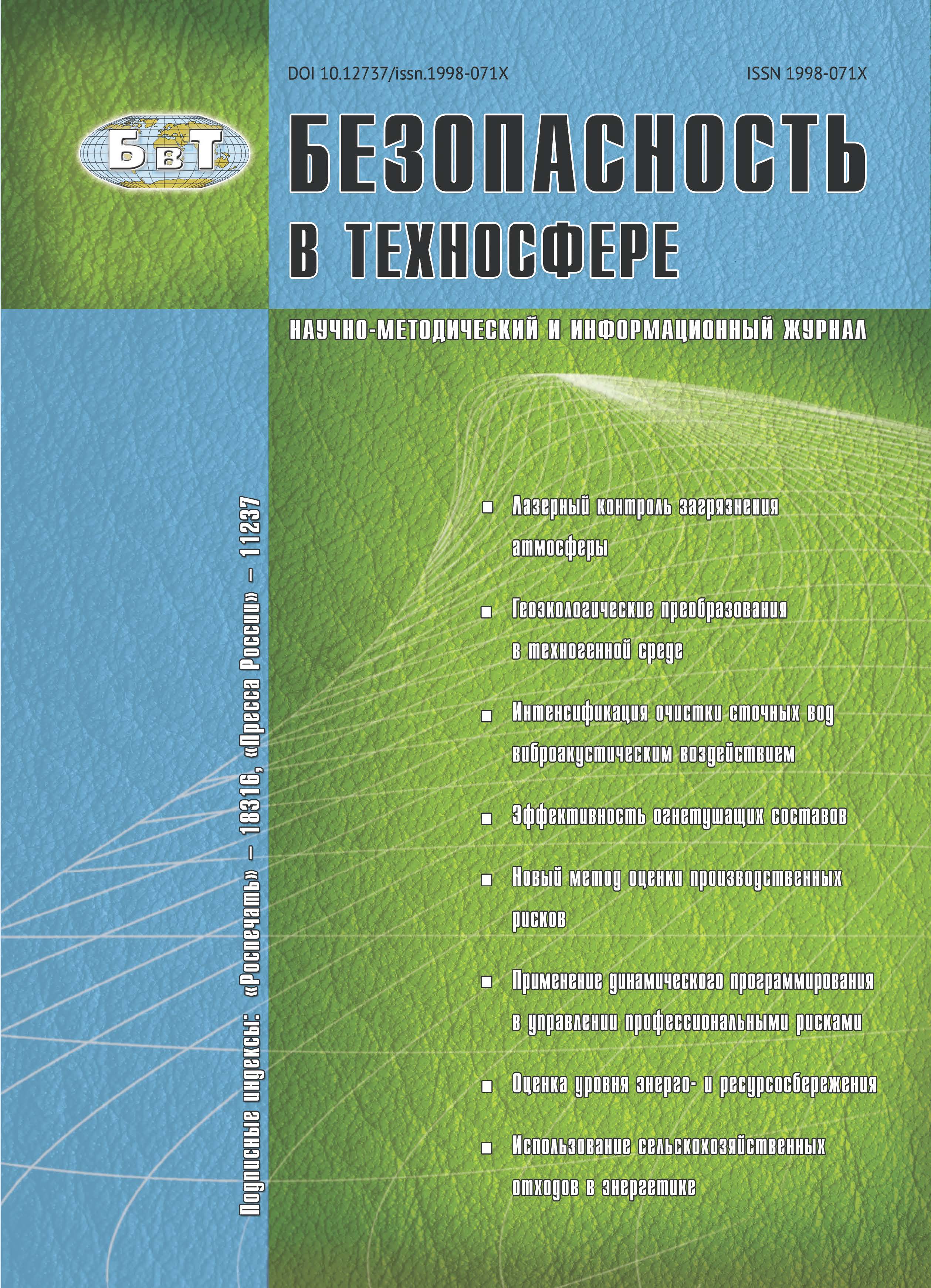Moskva, Moscow, Russian Federation
from 01.01.2003 until now
Immanuel Kant Baltic Federal University
Moscow, Moscow, Russian Federation
Increase of water treatment efficiency in water supply systems during the spring period directly depends on the forecast accuracy related to mass blossoming of phytoplankton in drinking reservoirs. Object of research is the Uchinsky reservoir – the drinking reservoir having insignificant its own water collection area, and fed by water of Moscow Canal. The data on seasonal phytoplankton dynamics received in Akulovsky Hydrosite Laboratory of the MCUE "Mosvodokanal" for two stations: Pestovo (reservoir’s headwater) and Listvyanka (reservoir’s lower part), and also actinometric data of continuous supervision from 1998 to 2003 performed by Lomonosov Moscow State University’s Geographical faculty Meteorological Observatory (MOMGU) have been used in this work. Results of mathematical modeling for dependence of start date and peak values of phytoplankton’s spring blossoming in the Uchinsky reservoir depending on intensity of total solar radiation during the period preceding the phytoplankton blossoming have been presented. It has been established that the more solar energy streams’ values in the range of photosynthetic active radiation (PhAR) will be received by the reservoir surface in the middle of February, the later peaks of phytoplankton’s spring blossoming will be observed. Research results represent undoubted interest for the analysis of reservoir’s light factor influence on phytoplankton’s seasonal dynamics, and also for the exact forecast related to beginning of phytoplankton’s spring blossoming in drinking reservoirs when planning water treatment actions.
water supply surface source, water quality, phytoplankton, microalgae’ spring blossoming, solar radiation.
1. Введение
Массовое развитие фитопланктона в водоемах питьевого назначения значительно ухудшает качество питьевой воды и требует определенных технологических приемов по ее улучшению при водоподготовке. Наиболее интенсивное развитие фитопланктона («цветение») происходит в весенний период вскоре после вскрытия льда в водоемах. При этом резко возрастает численность микроводорослей в воде, изменяется ее цвет и запах в результате прижизненного выделения органических продуктов жизнедеятельности и отмирания планктона.
Именно для решения этой проблемы существует водоочистка — процесс удаления из воды нежелательных химических и биологических загрязнителей, взвешенных твёрдых частиц и газов. Эффективность таких мероприятий возрастает в случае своевременного применения специальных дорогостоящих реагентов и напрямую зависит от точности прогноза периодов «цветения» фитопланктона. Окончательным результатом процесса очистки является получение питьевой воды, соответствующей нормативным документам.
Обычно сезонные изменения численности фитопланктона характеризуются интенсивным и быстрым весенним «цветением» и более продолжительным по времени и менее выраженным по масштабам летнеосенним «цветением» [1, 2]. Многие авторы считают световой фактор (уровень солнечной радиации, попадающей в толщу водоема) ключевым для начала весеннего развития фитопланктона [3–11].
1. Korsak M.N., Mosharov S.A., Dallakyan G.A., Belov A.Yu., Mitin A.V. The dynamic of phytoplankton and nutrients in the Uchinskoe reservoir during 1998-1999. Vestnik Moskovskogo Universiteta. Biologia [Moscow University Biological Sciences Bulletin], 2003, no 2, pp. 34-39. [in Russian].
2. Korsak M.N., Mosharov S.A., Dallakyan G.A., Belov A.Yu. Properties of season dynamics, community structure and productivity of phytoplankton in Uchinskoe reservoir in 1998-2001. Vestnik Moskovskogo Universiteta. Biologia [Moscow University Biological Sciences Bulletin], 2005; 1: 33-38. [in Russian].
3. Talling J.F. The underwater light climate as a controlling factor in the production ecology of freshwater phytoplankton. Mitt. Int. Verein. Limnol. 1971. Vol. 19. P. 214-243.
4. Hitchcock G.L., SmaydaT.J. The importance of light in the initiation of the 1972-73 winter-spring bloom in Narragansett Bay. Limnol. Oceanogr. 1977. Vol. 22. P. 126-131.
5. Ramberg L. Relations between phytoplankton and light climate in two Swedish lakes. Int. Revue ges. Hyrobiol. 1979. Vol. 64. P. 749-782.
6. Horn H., Paul L. Interactions between light situation, depth of mixing and phytoplankton growth during the spring period of full circulation. Int. Rev. ges. Hydrobiol. 1984. Vol. 69. P. 507-519.
7. Bleiker W., Schanz F. Influence of environmental factors on the phytoplankton spring bloom in Lake Zürich. Aquatic Sciences. 1989. Vol. 51. P. 47-58.
8. Bleiker W., Schanz F. Light climate as the key factor controlling the spring dynamics of phytoplankton in Lake Zurich. Aquatic Sciences. 1997. Vol. 59. P. 135-157.
9. Sommer U . Plankton ecology: Succession in plankton communities. Berlin, Springer Verlag, 1989. 369 p.
10. Legendre L . The significance of microalgal blooms for fisheries and for the export of particulate organic carbon in oceans. J. Plankton Res. 1990. Vol. 12. P. 681-699.
11. Shilovtseva O.A. The experience of the visual solar radiation measurements in the Moscow State University Meteorological Observatory. IRS 2000: Current Problems in Atmospheric Radiation, W. L. Smith and Yu. M. Timofeyev (Eds.). Hampton, Virginia: Deepak Publishing, 2001. P. 1117-1120.
12. Official Document. Instructions to Hydrometeorological Stations and Posts, No. 5. Actinometrical Observations. Part 1. Actinometrical Observations at Stations (Rosgidromet, Moscow, 1997) [in Russian].
13. Korsak M.N., Mosharov S.A., Skorobogatov A.M., Belov A.Yu., Dallakyan G.A. Influence of the summarized solar radiation on the spring bloom of phytoplankton in Uchinskoe reservoir. Vestnik Moskovskogo Universiteta. Biologia [Moscow University Biological Sciences Bulletin], 2009; 1: 41-47. DOI:https://doi.org/10.3103/S0096392509010088 [in Russian].







